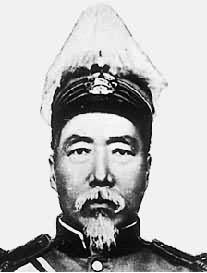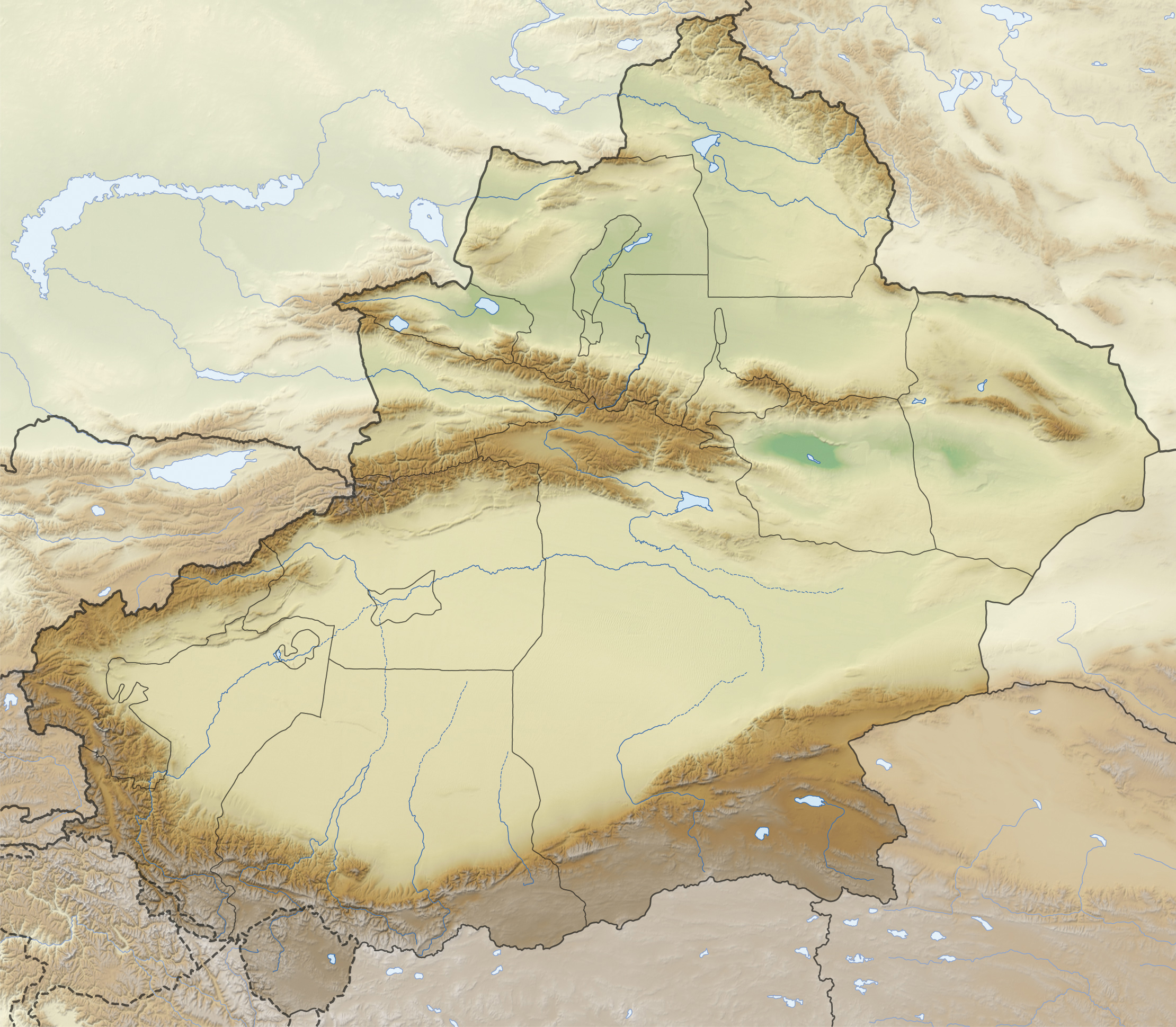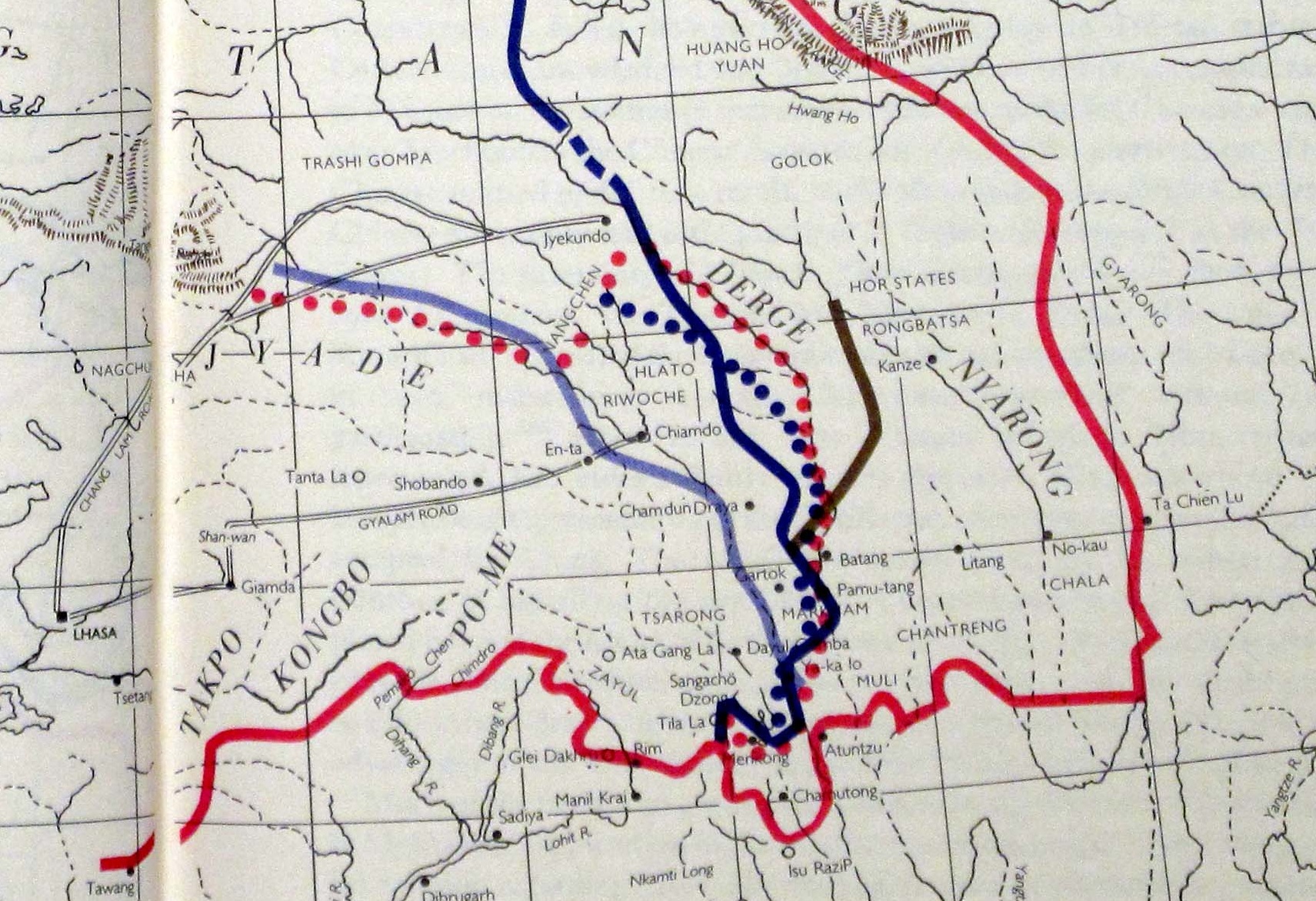|
Xinjiang Wars
The Xinjiang Wars () were a series of armed conflicts which took place within Xinjiang in the Republic of China during the Warlord Era and Chinese Civil War. The wars also played an important role in the East Turkestan independence movement. Major conflicts * Kumul Rebellion (1931–1934) * Soviet invasion of Xinjiang (1934) * Charkhlik revolt (1935) * Islamic rebellion in Xinjiang (1937) * Ili Rebellion (1944–1949) Battles * Battle of Aksu (1933) * Battle of Sekes Tash * Battle of Kashgar (1933) * Battle of Toksun Incidents * Kirghiz rebellion See also * Qinghai–Tibet War *Sino-Tibetan War The Sino-Tibetan War (, lit. Kham–Tibet dispute) was a war that began in 1930 when the Tibetan Army under the 13th Dalai Lama responded to the attempted seizure of a monastery. Chinese-administered eastern Kham region (later called Xikang), ... History of Xinjiang Wars involving the Republic of China 1930s conflicts 1930s in China Islam in China Military history ... [...More Info...] [...Related Items...] OR: [Wikipedia] [Google] [Baidu] |
Xinjiang Province, Republic Of China
Xinjiang Province () or Sinkiang Province was a province of the Republic of China. First set up as a province in 1884 by the Qing dynasty, it was replaced in 1955 by the Xinjiang Uygur Autonomous Region of the People's Republic of China. The original provincial government was relocated to Taipei as the Sinkiang Provincial Government Office (新疆省政府辦事處) until its dissolution in 1992. Administration The province inherited the borders of the Qing dynasty province, bordering Kansu, Tsinghai, the Mongol Area, Tibet Area and the countries Soviet Union, Afghanistan, India and Pakistan. The claimed boundaries of the province included all of today's Xinjiang and parts of Mongolia, Tajikistan, Afghanistan and Pakistan. History In 1912, the Qing dynasty was replaced by the Republic of China. Yuan Dahua, the last Qing governor of Xinjiang, fled. One of his subordinates, Yang Zengxin, took control of the province and acceded in name to the Republic of China in March ... [...More Info...] [...Related Items...] OR: [Wikipedia] [Google] [Baidu] |
Battle Of Kashgar (1933)
In the 1933 Battle of Kashgar (), Gen. Ma Zhancang signed a secret agreement with the daotai of Kashgar, Ma Shaowu, and his Chinese Muslim troops joined the Han Chinese garrison inside the yamen in Kashgar and helped them repulse Uighur and Kirghiz attacks led by Abdullah Bughra. Turkic Uighur and Kirghiz forces led by the Uighur Timur Beg Timur Beg ( ug, تیمور بیگ), also known as Timur Sijan (division general), was a Uighur rebel military leader in Xinjiang in 1933. He was involved in the 1933 Battle of Kashgar and participated before in Turpan Rebellion (1932). He asso ... had been attacking Chinese Muslim villages and pillaging them. During the fighting Timur Beg was shot and then beheaded by Ma Zhancang's forces, his head being put on display at the Idgah mosque. When more Chinese Muslim troops arrived, they reinforced the Chinese garrison inside Kashgar. Osman Ali, the Kirghiz rebel, attempted to attack the yamen, but was driven back with heavy losses. He then p ... [...More Info...] [...Related Items...] OR: [Wikipedia] [Google] [Baidu] |
1930s In China
Year 193 ( CXCIII) was a common year starting on Monday (link will display the full calendar) of the Julian calendar. At the time, it was known as the Year of the Consulship of Sosius and Ericius (or, less frequently, year 946 '' Ab urbe condita''). The denomination 193 for this year has been used since the early medieval period, when the Anno Domini calendar era became the prevalent method in Europe for naming years. Events By place Roman Empire * January 1 – Year of the Five Emperors: The Roman Senate chooses Publius Helvius Pertinax, against his will, to succeed the late Commodus as Emperor. Pertinax is forced to reorganize the handling of finances, which were wrecked under Commodus, to reestablish discipline in the Roman army, and to suspend the food programs established by Trajan, provoking the ire of the Praetorian Guard. * March 28 – Pertinax is assassinated by members of the Praetorian Guard, who storm the imperial palace. The Empire is auctioned o ... [...More Info...] [...Related Items...] OR: [Wikipedia] [Google] [Baidu] |
1930s Conflicts
Year 193 ( CXCIII) was a common year starting on Monday (link will display the full calendar) of the Julian calendar. At the time, it was known as the Year of the Consulship of Sosius and Ericius (or, less frequently, year 946 '' Ab urbe condita''). The denomination 193 for this year has been used since the early medieval period, when the Anno Domini calendar era became the prevalent method in Europe for naming years. Events By place Roman Empire * January 1 – Year of the Five Emperors: The Roman Senate chooses Publius Helvius Pertinax, against his will, to succeed the late Commodus as Emperor. Pertinax is forced to reorganize the handling of finances, which were wrecked under Commodus, to reestablish discipline in the Roman army, and to suspend the food programs established by Trajan, provoking the ire of the Praetorian Guard. * March 28 – Pertinax is assassinated by members of the Praetorian Guard, who storm the imperial palace. The Empire is auctioned o ... [...More Info...] [...Related Items...] OR: [Wikipedia] [Google] [Baidu] |
Wars Involving The Republic Of China
War is an intense armed conflict between states, governments, societies, or paramilitary groups such as mercenaries, insurgents, and militias. It is generally characterized by extreme violence, destruction, and mortality, using regular or irregular military forces. Warfare refers to the common activities and characteristics of types of war, or of wars in general. Total war is warfare that is not restricted to purely legitimate military targets, and can result in massive civilian or other non-combatant suffering and casualties. While some war studies scholars consider war a universal and ancestral aspect of human nature, others argue it is a result of specific socio-cultural, economic or ecological circumstances. Etymology The English word ''war'' derives from the 11th-century Old English words ''wyrre'' and ''werre'', from Old French ''werre'' (also ''guerre'' as in modern French), in turn from the Frankish *''werra'', ultimately deriving from the Proto-Germanic *''we ... [...More Info...] [...Related Items...] OR: [Wikipedia] [Google] [Baidu] |
History Of Xinjiang
Xinjiang historically consisted of two main geographically, historically, and ethnically distinct regions with different historical names: Dzungaria north of the Tianshan Mountains; and the Tarim Basin south of the Tianshan Mountains, currently mainly inhabited by the Uyghurs. They were renamed Xinjiang () in 1884, meaning "new frontier," when both regions were conquered by the Manchu Qing dynasty after the Dungan revolt (1862–1877). The first inhabitants of Xinjiang, specifically from southern and western Xinjiang formed from admixture between locals of Ancient North Eurasian and Northeast Asians descent. The oldest Tarim mummies, found in the Tarim Basin, are dated to the 2nd millennium BCE. In the first millennium BCE Indo-European-speaking Yuezhi nomads migrated into parts of Xinjiang. In the second century BCE the region became part of the Xiongnu empire, a confederation of nomads centered on present-day Mongolia, which forced the Yuezhi out of Xinjiang. Eastern Centra ... [...More Info...] [...Related Items...] OR: [Wikipedia] [Google] [Baidu] |
Xinjiang Wars
The Xinjiang Wars () were a series of armed conflicts which took place within Xinjiang in the Republic of China during the Warlord Era and Chinese Civil War. The wars also played an important role in the East Turkestan independence movement. Major conflicts * Kumul Rebellion (1931–1934) * Soviet invasion of Xinjiang (1934) * Charkhlik revolt (1935) * Islamic rebellion in Xinjiang (1937) * Ili Rebellion (1944–1949) Battles * Battle of Aksu (1933) * Battle of Sekes Tash * Battle of Kashgar (1933) * Battle of Toksun Incidents * Kirghiz rebellion See also * Qinghai–Tibet War *Sino-Tibetan War The Sino-Tibetan War (, lit. Kham–Tibet dispute) was a war that began in 1930 when the Tibetan Army under the 13th Dalai Lama responded to the attempted seizure of a monastery. Chinese-administered eastern Kham region (later called Xikang), ... History of Xinjiang Wars involving the Republic of China 1930s conflicts 1930s in China Islam in China Military history ... [...More Info...] [...Related Items...] OR: [Wikipedia] [Google] [Baidu] |
Sino-Tibetan War
The Sino-Tibetan War (, lit. Kham–Tibet dispute) was a war that began in 1930 when the Tibetan Army under the 13th Dalai Lama responded to the attempted seizure of a monastery. Chinese-administered eastern Kham region (later called Xikang), and the Yushu region in Qinghai, over disputes regarding monasteries. Ma clique warlord Ma Bufang secretly sent a telegram to Sichuan warlord Liu Wenhui and the leader of the Republic of China, Chiang Kai-shek, suggesting a joint attack on the Tibetan forces. Their armies rapidly overwhelmed and defeated the Tibetan Army. Background The roots of the conflict lay in three areas: first, the disputed border between Tibetan government territory and the territory of the Republic of China, with the Tibetan government in principle claiming areas inhabited by Tibetans in neighboring Chinese provinces (Qinghai, Sichuan) which were in fact ruled by Chinese warlords loosely aligned with the Republic; second, the tense relationship between the 13 ... [...More Info...] [...Related Items...] OR: [Wikipedia] [Google] [Baidu] |
Qinghai–Tibet War
The Qinghai–Tibet War or the Tsinghai–Tibet War was a conflict that took place during the Sino-Tibetan War. A rebellion led by the 13th Dalai Lama, Dalai Lama with British support wanted to expand the original conflict taking place between the Tibetan Army and Liu Wenhui (Sichuan clique) in Xikang, to attack Qinghai, a region northeast of Tibet. Using a dispute over a monastery in Yushu City, Qinghai, Yushu in Qinghai as an excuse in 1932, the Tibetan army attacked. Qinghai Muslim General Ma Bufang overran the Tibetan armies and recaptured several counties in Xikang province. Shiqu, Dêgê County, Dege and other counties were seized from the Tibetans. The war against the Tibetan army was led by the Muslim General Ma Biao (general), Ma Biao. The Tibetans were pushed back to the other side of the Jinsha river. The Qinghai army recaptured counties that had been controlled by the Tibetan army since 1919. The victory on the part of the Qinghai army threatened the supply lines to Ti ... [...More Info...] [...Related Items...] OR: [Wikipedia] [Google] [Baidu] |
Kirghiz Rebellion
The Kirghiz rebellion () occurred when Kyrgyz irregulars in Xinjiang revolted against the Republic of China in March 1932. The Kirghiz rebels, led by Id Mirab, revolted in the Tian Shan mountains as part of the wider Kumul Rebellion in Xinjiang, until they were quickly defeated by government forces led by Ma Shaowu, the Hui military commander of Kashgar, with some minor assistance of the Soviet Union The Soviet Union,. officially the Union of Soviet Socialist Republics. (USSR),. was a List of former transcontinental countries#Since 1700, transcontinental country that spanned much of Eurasia from 1922 to 1991. A flagship communist state, .... References China–Soviet Union relations Wars involving the Soviet Union Conflicts in 1932 1932 in China East Turkestan independence movement Rebellions in Asia Xinjiang Wars Wars involving the Republic of China {{China-hist-stub ... [...More Info...] [...Related Items...] OR: [Wikipedia] [Google] [Baidu] |
Battle Of Toksun
The Battle of Toksun () occurred in July 1933 when Khoja Niyas Hajji, a Uyghur people, Uighur leader, defected with his forces to the newly enthroned government of Sheng Shicai. Khoja Niyas Hajji marched with his troops across Dawan Ch'eng and occupied Toksun, where the 36th Division (National Revolutionary Army), New 36th Division forces of General Ma Shih-ming achieved victory over Niyas Hajji's forces. References Conflicts in 1933 History of Xinjiang 1933 in China East Turkestan independence movement Xinjiang Wars {{China-hist-stub ... [...More Info...] [...Related Items...] OR: [Wikipedia] [Google] [Baidu] |
Battle Of Sekes Tash
The Battle of Sekes Tash () of 1933 was a minor battle in which New 36th Division troops under General Ma Zhancang Ma Zhancang (, Xiao'erjing: ) was a Hui Chinese Muslim general of the New 36th Division (National Revolutionary Army), who served under Generals Ma Zhongying and Ma Hushan. At the Battle of Kashgar (1933), he repulsed an attack of Uighurs led ... attacked and defeated Uighur and Kirghiz armies at Sekes Tesh. References Sekes Tash History of Xinjiang 1933 in China East Turkestan independence movement Sekes Tash {{China-hist-stub ... [...More Info...] [...Related Items...] OR: [Wikipedia] [Google] [Baidu] |




